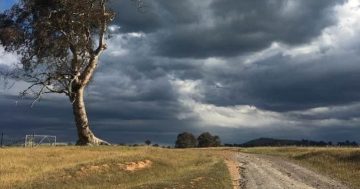 A block of ice recording 2,000 years of snowfall in East Antarctica has shown human activity to blame for drier weather conditions in Western Australia (WA) according to new research from the Australian Antarctic Division (AAD).
A block of ice recording 2,000 years of snowfall in East Antarctica has shown human activity to blame for drier weather conditions in Western Australia (WA) according to new research from the Australian Antarctic Division (AAD).
Glaciologist at AAD, Tas van Ommen, said the rainfall reduction in South West WA since the 1970s was likely due to carbon dioxide and other greenhouse gas emissions from human activity.
“The study indicates that the rainfall reduction is unlikely to be due to natural variation alone,” Dr van Ommen said, “suggesting drier conditions could become the ‘new normal’ as emissions rise.”
“This has implications for the management of residential water supplies and industrial and agricultural production in the South West region,” he said.
“Between the 1970s and 2000s there was a 15-20 per cent decline in winter rainfall in South West Western Australia and, at the same time, a 10 per cent increase in snowfall in Law Dome.”
Law Dome is near Australia’s Casey research station on the icy continent.
Dr van Ommen said the link between increased snowfall in Antarctica and reduced rainfall in Australia was known as a teleconnection.
He said the research extended previous work using a 750-year ice core record of snowfall from Law Dome.
“Using the 750-year ice core record we found that, since the 1970s, atmospheric pressure systems south of Australia have directed more warm, moist air towards Law Dome, resulting in higher snowfall, while also bringing cool, southerly, dry winds and reduced rainfall to parts of South West Western Australia,” Dr van Ommen said.
“Our new study using an extended ice core record shows that while natural variations can produce such drought events, they are very rare.”
Study team leader from the University of Tasmania’s Institute for Marine and Antarctic Studies, Yaowen Zheng said scientists used the ice core record to reconstruct rainfall in South West WA for the full 2,000 years.
Mr Zheng said the rainfall reconstruction showed that the drought connection observed since the 1970s was the only such event since 1250, and one of three droughts of similar duration and intensity in the full 2,000 years.
“The other two droughts occurred in the periods around 400 and 750 CE,” he said.
“The reconstruction shows that the rainfall decrease in Western Australia is not unprecedented, but it is unusual.
“Our model simulations indicate that the droughts that occurred before the industrial revolution may have arisen through natural climate variability.”
Mr Zheng said, however that the simulations also indicated that greenhouse gases from human activity were more likely to be the dominant driver of the rainfall reduction since the early 1970s.
“Nevertheless, natural variability may also have played a role in determining both the timing and magnitude of the reduction in rainfall,” he said.




